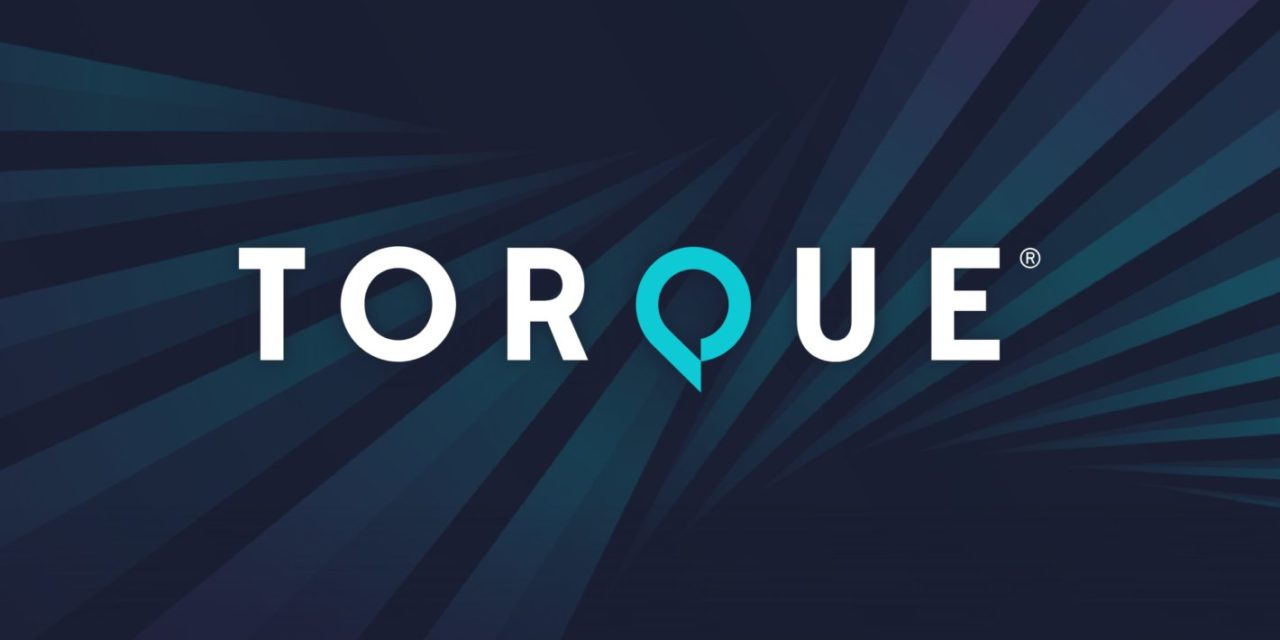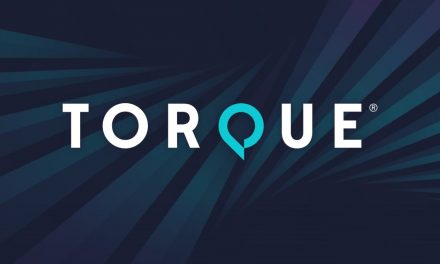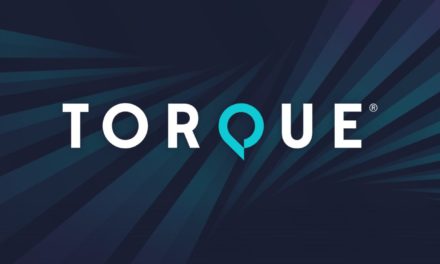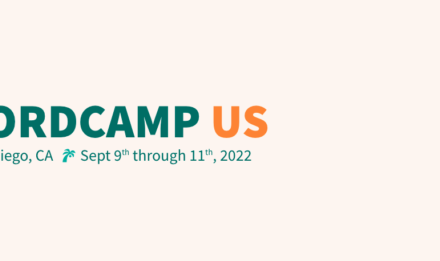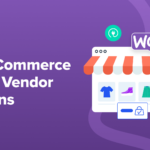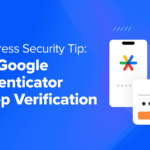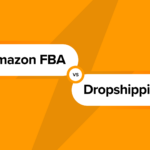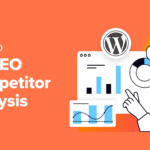Welcome to Press This, the WordPress community podcast from WMR. Here host David Vogelpohl sits down with guests from around the community to talk about the biggest issues facing WordPress developers. The following is a transcription of the original recording.
David Vogelpohl: Hello everyone and welcome to Press This the WordPress community podcasts on WMR. This is your host, David Vogelpohl, I support the WordPress community through my role at WP Engine, and I love to bring the best of the community to you hear every week on press this as a reminder, you can find me on Twitter @wpdavidv, or you can subscribe to press this on iTunes, iHeartRadio, Spotify, or download the latest episodes at wmr.fm. And this week’s episode we have a very fun topic, internet, art and WordPress and joining us for that conversation from Digital Cube I’d like to welcome Rachel Winchester to Press This Rachel welcome.
Rachel Winchester: Hi David. Thanks for having me.
DV: So glad to have you here. It’s a such a fun topic this notion of internet art or Uber when it first kind of ran into you and was hearing about this topic, I was like wait a minute, what is this internet art. And I think it’s gonna be really fun to cover it on the show today so for those listening what Rachel is going to talk about is her thoughts about what internet art is I promise you’ll be pleasantly surprised. And how you can use your WordPress skills to create something amazing, and what I consider is a wonderful new art for. And so really looking forward to hearing Rachel’s thoughts on this and I know this is an area of passion for her and is created her honor and art really kind of curious to hear some of the WordPress connections here. Rachel, I’m gonna ask you though the same first question I asked every guest. Did you briefly tell me your request origin story when was the first time you use WordPress.
RW: Sure, so the first time I used WordPress was right out of college, I had a website idea that I wanted to pursue and a friend of mine who knew more about computers, disturbed me in the direction of WordPress. So, that year after college I built my first WordPress site. And of course it was, it was art related.
DV: Oh, I’m gonna ask you like what kind of site was it.
RW: Yeah, cuz because I studied art history in college so when I saw this idea I had was very related to art, and then after college and I had more time, I decided to finally build the site. But it wasn’t until maybe a year later that I got active in the WordPress community. I wanted to learn more about the platform that I was using for that site, and some other website ideas that I had in mind, just as a hobby. So I started going to meetups to learn more about the platform and meet more people in the community.
DV: I love it I love it I love it I love it, we’ve definitely heard similar stories of that many times over here on press this, it’s amazing to hear that connection for you as well. What year was this reach I’m just curious, like when did you first started, remember like roughly.
RW: So I started the site in 2017 That’s my year I graduated and I started going to meetups in 2018
DV: Okay okay so you like him right into the community like right in the thick of like Gutenberg rolling out and all of that. Do you remember that at the time or were you still just so earlier learning,
RW: I do remember that I do remember a lot of people will talk to you about that I was such a novice at the time that I’d kind of just let let the talk over me. But it was a term that kept coming up that I couldn’t ignore. I love it I love it. Well actually make most of my sites with Elementor, so I haven’t had to use Gutenberg Gutenberg, the block editor too much.
DV: Okay, okay. Oh, I’m glad you’re finding success with Elementor I think they have a very wonderful product. That’s good to hear. So, tell me you’re working at a company called Digital cube. Tell me a little bit about what the company does and what you do there.
RW: Yeah, so I just started working for digital cube, and incredibly excited to be working for them digital cube makes WordPress products, their most popular ones are Animoto and shifter so Animoto is enterprise hosting and shifter offers static and headless WordPress hosting, and then there’s a jam stack. I mean, lab works which is a incubation agency that is part of digital cube as well so there’s quite a lot going on with WordPress, in the digital cube company at Digital cube I am the user experience product designer. So I’m all over the place, helping design their products, and do more user experience research,
DV: like it’s very well positioned here for this topic on internet art in general and of course the crossover to WordPress. Sounds like you’re right, it kind of been the nexus point of the Venn diagram here for all of these topics, that’s very appropriate they were interviewing you and all this regional. So let’s let’s start with the obvious question like, What is, what is internet are in I don’t know like if you could share some examples or even like URLs you could like say on the show people could like type in listening and like follow along, but like, help me understand
RW: I’d love to explain it to you and if you have any follow up questions during my explanation just, you know, you can interject. So many internet art is art that uses the internet, as its medium, or as art that uses the internet as its main mode of consumption of exhibiting itself so it’s art that uses that you view in the browser, and it uses the internet, the network connections, as the literal medium. So it’s a type of digital art, because the Internet uses digital technology to work. And it’s also a type of conceptual art, because it’s more about the idea or the concept behind the work, rather than the actual like appearance itself. So, artworks don’t often look look like an impressionist painting. It’s more about the idea of a hand behind it, how it was made, why it was made, what it makes you think.
DV: So you have like some examples here, you know, newer kind of describing visual things on a podcast which I think is really fun exercise and help me understand like what would a piece of internet art look like or function like or behave.
RW: So one of one word that I want to explore in the product podcast is called Gramma Chon, it’s pretty popular work, especially in the internet art world, and it was made by an artist named Mark America back in 1997. So Gravitron, it has its website at Dunn website gravitron.com And it’s still live. And just to let you know how significant this work is, It was exhibited at the Whitney Biennial. Can you read Machane is Gra, mm ATRON. Thank you. So this work is. It’s a piece of literature, but it’s also a website, so it, it plays around with storytelling, and literature formats a bit. So the way the story is told is that the viewer, the user clicks on links within the text to navigate through all of the contents. So each person has very different experience of this work based on the links that they click. And Mark America created this work to kind of play around with how stories can be told, using the internet as, as its medium as the format. The web is based off of hypertext links, you know, every button every link is will bring you to another page with new information. So he use that idea of hypertext, to create an entire immersive artwork. So gravitron.com If you go to this website, there’s you know a little opening page and you can just click on the little gift to get through to the artwork. And then there’s some more links that tell you you know about Gravitron and some other things that accompany the artwork, but then you click on to begin to begin the actual story. And there’s a higher bandwidth lower bandwidth story, and even some audio files to click on. As you go through the story.
DV: I found it very like RPG like almost in a sense, like I was kind of like choosing the next adventure and it was like in that lens but it seemed very like, like, like the difference between, like, something like Graham and Tron and like just showing a JPEG of artwork on a web page is this interactivity aspect this this notion of like an experience maybe that is unique to the observer person consuming the art. It feels like it’s like the difference between like a JPEG and Gravitron is this notion of interactivity with the art would you, Would you say that’s fair with internet art or is there, very static forms of internet.
RW: Yeah, that’s a very popular observation that people have made with internet art, because a lot of the internet is interactive. You know when you go to a website, it’s not just a static image in front of you you have to click through things and scroll and interact with the webpage so therefore, a lot of interest, a lot of internet Partworks are interactive, they’re environments that the user has to explore, in order to consume the full artwork.
DV: So it’s funny because we’re kind of getting into like the notion of like commercial versus an artistic art, I mean I know the right ways to phrase this but I think that dynamic is interesting as well. We’re going to take a quick break and we’ll be right back.
DV: Welcome back to Press This community podcast on WMR, this is your host David Volgelpohl in the middle of a very interesting interview with Rachel Winchester, talking about Internet art Rachel Right before the break, you were talking a little bit about how many people observe the interactivity, this kind of guided, excuse me, a guided but this interactive experiences may be one of the things that differentiates internet art from say like static art, but then you also talked about like, well hey look designs for web pages are also this. It feels like internet art of course because it’s in an art form versus a commercial sense, it maybe lets you like stretch in ways you can think in ways you wouldn’t normally do as part of your commercial UX job or web design job is that true is that a benefit that you found Yes.
RW: That’s exactly true and that’s actually a really good way to think about think about the idea of internet art so in the WordPress world. We’re definitely familiar with the term internet products. So internet art is like internet products, but not for the not for the purpose of business or for the point of making a profit, sure artists do you know they do have their own careers and they do need to earn money. But as far as an Internet artwork is very different from an internet product, an artwork is made to for interpretations made for people to contemplate and for purposes of activism, rather than an internet product, which is made for a business to engage with their customers or increase their profits in some way. So it’s definitely that’s a great way to think about, About the whole field,
DV: do you find the creativity you get by participating in internet art has creativity benefits in the commercial work that you do. Because stretching your creative muscle creating art, like affect your creative side and the business sense. And it’s time to design a product or an experience.
RW: I think it does, it makes me think out of the box. I don’t just think, simply a hard question
DV: when I was heavy in my agency days it was like okay this is another product listing. This is another my team page and like we wanted to make it pretty and unique and everything but like it was these repeating patterns and I just found it really hard to be creative, after doing it, you know, doing so much of the same pattern so I don’t know like I could imagine like stretching myself to like throw all that aside and focus on art and thinking about the creative effects that can have on me, I’m just curious if you might have had the same experience.
RW: I’ve been, I loved art my whole life, and I even studied art history in college. So I’ve gotten into the habit of now going to art museums and galleries and I’ve always loved contemporary art. I think I first heard about internet art in my contemporary art class in college, probably mentioned alongside you know digital art and other tech innovations coming to the art world. I then just decided to do my own research. But at the same time, like, you know, coming out of college with a degree in art history, but then falling in love with WordPress and wanting to kind of have a career with the Internet. I was always thinking about both topics at the same time the Internet are. So, eventually, this is, this is gonna become a passion project of mine, and it’s just, it has it’s been more and more interesting topic for me to, to go into in my free time, but especially after learning starting to learn with WordPress, press CMS and getting more into code and like learning HTML and CSS starting with JavaScript, getting more into how the internet works how WordPress works as a technology. I’ve been simultaneously, bringing that same knowledge into understanding internet artworks. So it’s like, as my career goes with WordPress and as I understand, how to be a better UX designer and work more with digital cue and WordPress. So as I understand the internet more I understand, internet, art, more because I kind of already have that basis and in art history from going into college and just kind of always having art in my life.
DV: That’s one of the most beautiful parts of WordPress, you know, because of how accessible it is to learn to build and customize and progress your skills. People come to it from all these different kinds of educational backgrounds like experience backgrounds and bring that into what they build it gets it’s part of the wonderful strength of WordPress so that’s really cool to hear how you’ve kind of incorporated that like to get a little bit more specific though like on the WordPress skills like how do you think the skills needed to build a WordPress site like translate into Internet art like are people like creating internet art with WordPress or is it more like I know WordPress and so therefore I can make internet are both, or how do you think,
RW: well, if I think of WordPress as being one of the many tools that internet artists could use to manipulate the internet. So, like, a painter, you know, uses a paintbrush to paint a canvas, an internet artist could use WordPress to manipulate the browser so in this situation WordPress is the paintbrush, and the browser is the canvas. So any kind of site, any kind of digital product that you can normally make with WordPress, you could use that same skill to make an artwork. So like for example going back to Mark Americas were Gravitron, the way he did that is he just made a bunch of pages or posts, but he has a page and each page has a bunch of links on it. And those links just go to other pages. So that’s something that format that architecture is something very easy to make in WordPress with posts and pages. It’s just about the thought that goes into the storytelling, and, and making all those connections that becomes art. I’ve also seen some artworks with eat that play around with E commerce and the format of E commerce. I think I actually have a friend who created a dating app, artwork, where it, you essentially add a person to a cart and buy them as a way of swiping right on Tinder, you know, selecting them as your date, so that’s something that can be made with WordPress and WooCommerce they’re not even WooCommerce maybe some other kind of plugin or software to create the E commerce UI. But then the idea of, you know, replacing products with people, is where the artwork comes from.
DV: It’s really interesting because I can both of those examples you taking kind of common web experiences and transforming them into an artistic expression. So it’s not just, I guess the grama Tron version is maybe kind of like that but it seems like the E commerce example was maybe parodies not the wrong word but like commentary leveraging common web experiences, you see it that way or how do you,
RW: I do I do, and what you’re actually touching on is the next topic which is post internet art. So internet art is art that’s made using the internet as a medium, whereas post internet art is art that comments on the existence of the internet. Well, well not all internet artworks can be contained within a browser, and some ideas for Internet artworks are very, very meta metaphysical and they comment on the whole world. So, so, art historians are starting to call, especially works after 2010 or post internet art because the internet is so pervasive in our society, that it’s hard to avoid using the internet in a work.
DV: We have gotten very meta. For sure, coming full circle on purpose internet art. I want to kind of dive a little deeper into this, we’re going to take one more break the right
DV: Welcome back to Press This WordPress community podcast I’m W Amar or in the middle of our episode talking about Internet art with Rachel Winchester Rachel Right before the break we were talking a little bit about kind of getting very meta kind of going from internet art medium of using the internet for art and post internet art, kind of commentary on the internet in artistic expression, so thank you for that distinction. You know I know artists in various capacities and, like, they all eat so I’m wondering is there a financial aspect to creating internet art I mean I know we’ve seen things like NF T’s and I don’t know if you consider that internet or, like, maybe we just ignore the NF T or minute but just in general like can you say to people sell internet art is this, is this like an artistic expression, people are able to earn a living from or is it still like wait and see.
RW: So yes you could sell it internet artwork. In theory, just just the way how the same way how people can sell a website to a client, and, you know, move that data from your server to their server. You could also, in theory, self internet artwork. However, that isn’t the primary way that internet artists themselves. I think the primary way is actually art residencies. So residency is when an arts organization usually like a museum or gallery will pay for this artist to come and do some research, do some developments. But mostly, make an artwork at their institution with their institution’s name on it, like, you know like this mark America work in partnership with the MoMA, or something like that. So that’s, I think the primary way that internet artists, earn money. Part of it is because it is kind of hard to monetize monetize the individual artworks, but also because the artists are very interested in getting more involved with the people who are viewing their work and more involved with the community. Internet and Internet art and internet artists are very inclusive. If you think of how the internet is everywhere and anyone with the connection can participate. The artists love that fact about their medium. So, so a lot of the internet artists are very community oriented. They love working with institutions and universities to to help. Help people understand what they’re doing. They’re working to help them too
DV: makes all the sense in the world I mean that connected nature of it, I hadn’t thought about that perspective and must be very incredibly special when compared to less connected art forms very interesting. So speaking of like, like connectedness, but also like the medium like you’re explaining like they were partnering with, you know, maybe museums or art houses and things like that where there’s like this interactive experience with it so it gets me thinking of like mediums and connected devices. I’ve seen examples like you explained, actually, things like VR and AR I’m just curious, like, do you think things like augmented reality or just the different types of connected devices, how do you think that will change in art in the future.
RW: I think it’ll, it’ll broaden the field, it’ll just give more possibilities for artists to work with. Like for example if an artist makes an artwork that is best viewed on a projector. The more that projectors, more that that device becomes popular among everyday users and more people can can view that artwork, the way it’s meant to be viewed. But also it, it gives more, it gives the artists another canvas to work with, like I was talking before about how, like the browser and the window and, and how these are, these artworks are things you view on a screen, but that screen doesn’t need to be a computer screen or phone screen, it could be a TV or, or a tablet or all the other devices that are connected to the internet, virtual reality environments and augmented reality, it just, it just gives them a wider canvas to paint on.
DV: Wow, that was incredible Rachel is super interesting and I think, a wonderful thought to end on. Thank you so much for joining us today.
RW: Thank you for having me. I was excited to talk about this topic,
DV: yeah it was a very interesting I’m gonna have to go play around with grammar trial, a little bit, and making my own internet art project I actually had some ideas hearing you talk about it. Super super cool thank you so much, you’d like to check out more about what Rachel is up to please visit visual webmaster comm. Thanks everyone for listening to Press This WordPress community podcast on WMR. Again, this has been your host, David Vogelpohl, I support the WordPress community through my role at WP Engine, and I love to bring the best of the community to you here every week on Press This.

